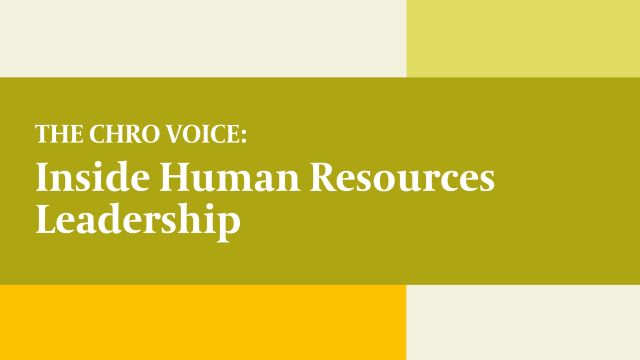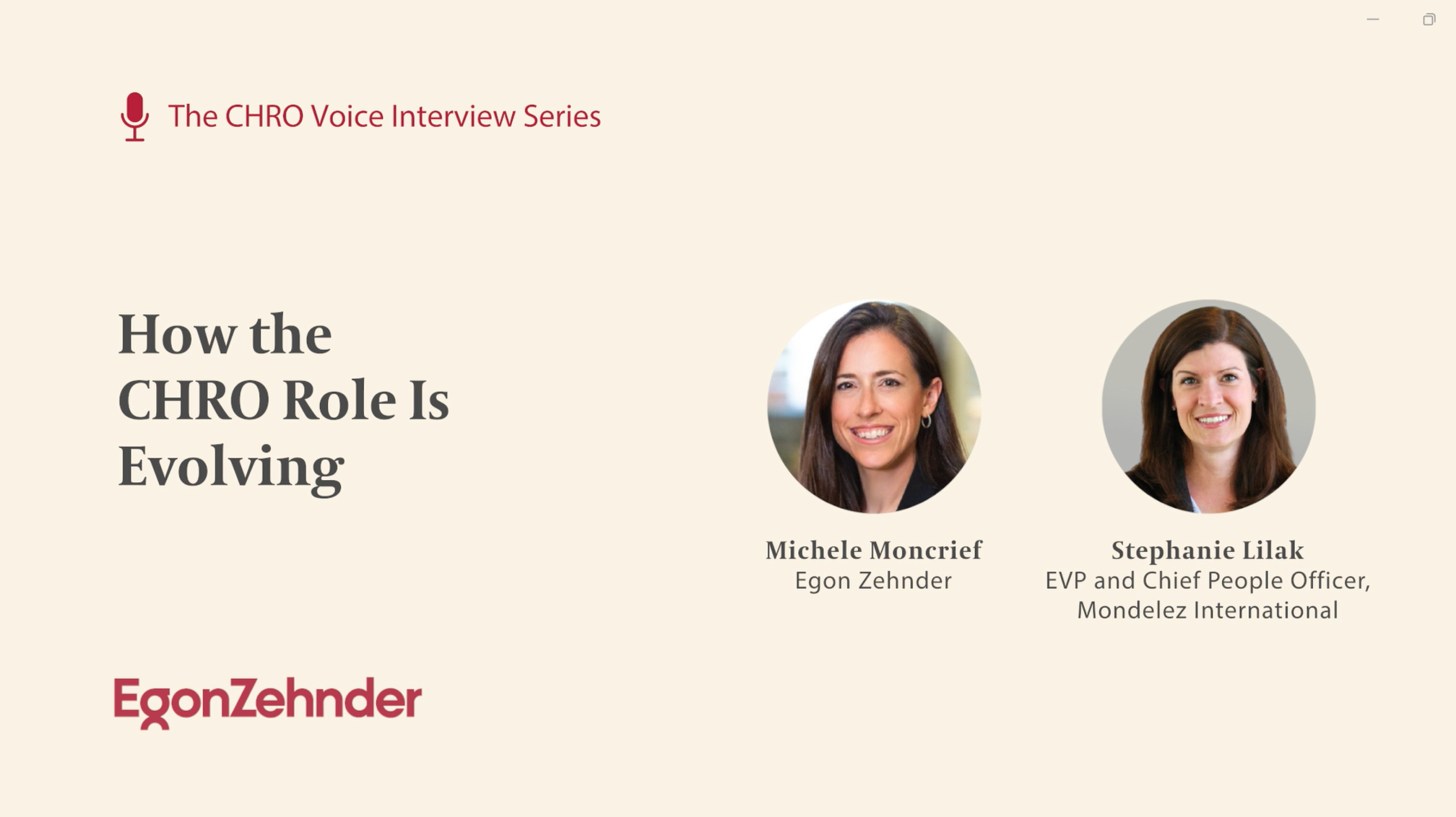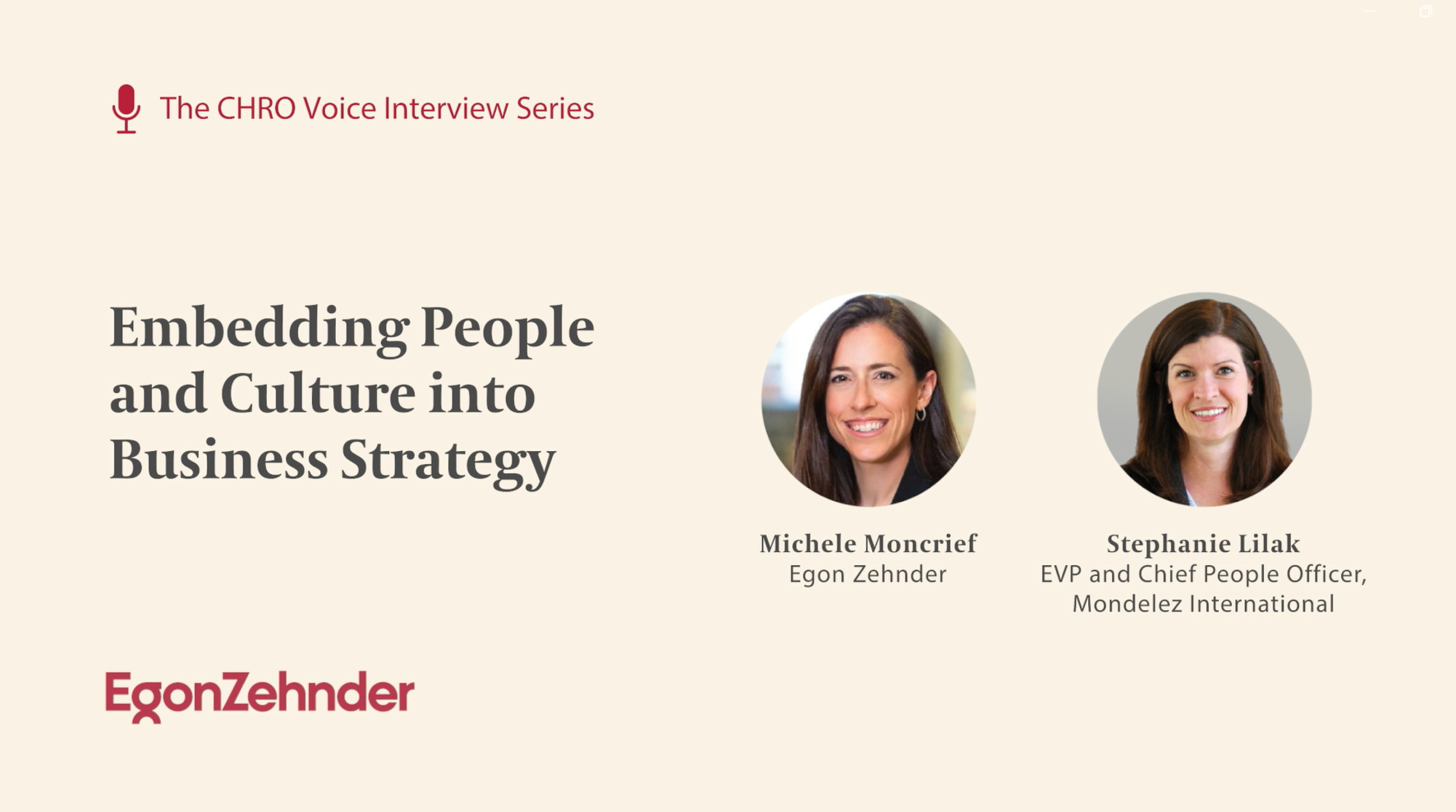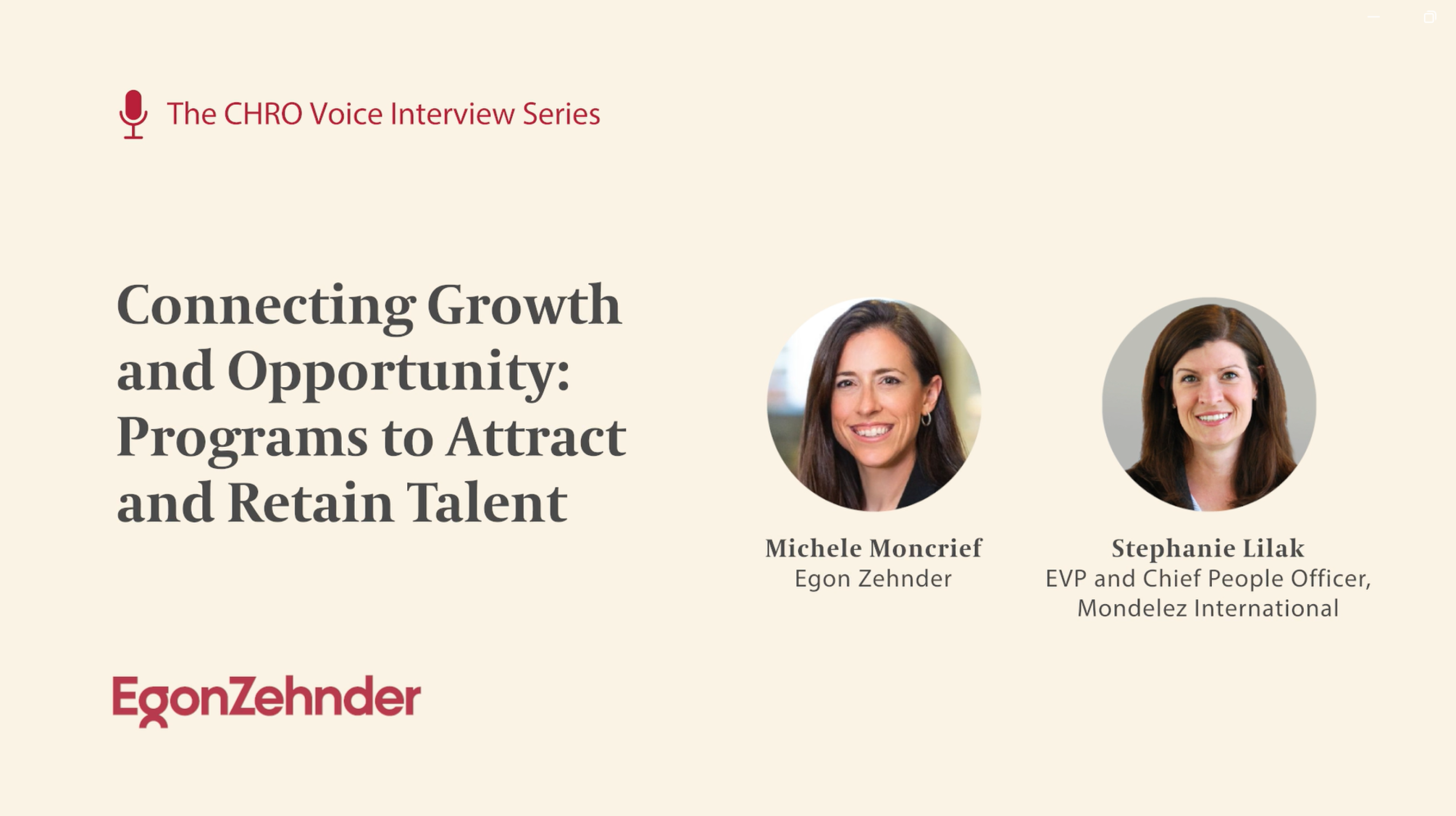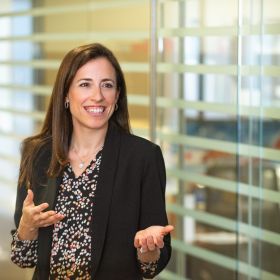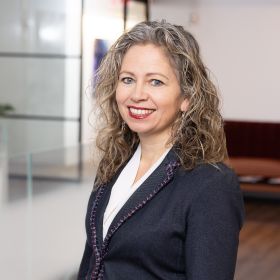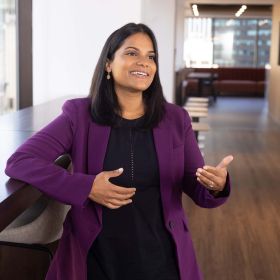Being a global organization gives us the chance to give people multi-country, cross-border experiences and let them immerse themselves in different cultures, businesses, consumers, and retailers. That's a whole other level of learning for people.
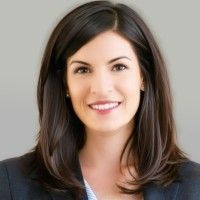 Stephanie LilakEVP and Chief People Officer of Mondelēz International
Stephanie LilakEVP and Chief People Officer of Mondelēz International
Known for its globally beloved snacks, Mondelēz doesn’t stop at delighting its customers. With 90,000 employees worldwide, the company has made People and Culture a strategic priority woven into every aspect of its operations.
We sat down with the company’s EVP and Chief People Officer, Stephanie Lilak, who shares how this focus shapes the company’s approach to innovation and tech adoption, her insights on leadership, and the evolving role of the CHRO.
How did you develop a passion for HR, and what led you to that path?
My journey hasn’t always been typical, and that's one of the things that has really built and solidified my passion for the Human Resources field. I've been intentional about collecting diverse experiences throughout my career. That diversity has been represented by the types of HR roles I've had—whether it's business partner roles, which is the foundation of my career, or specialist roles in different parts of the business. I currently am in the CPG industry, but have also been in Tech and QSR, so lots of diverse experiences in global organizations. I am very lucky to be at Mondelēz, which truly feels boundaryless in the way it operates and the geographies we operate in.
Moreover, I've always felt like I'm a business leader first. I love being challenged, taking on difficult work and then having a trusted partnership. This is what's kept my passion high, kept me interested, and learning and growing. In a world changing at lightning speed, if you're not passionate about a challenge, you're just going to be tired.
What are the essential leadership traits for CHROs today?
The core areas include being a business leader, having high business acumen, being able to lead change and being agile. More important than ever, having the ability to build trust within the organization and being a trustworthy leader are key qualities, too. Being a leader who is authentic and cares, and who builds a workplace infused with a sense of belonging and well-being. The workforce, our peers, and our leaders are looking for that kind of person.
How do you see the role of the CHRO evolving? What are the key drivers of this change?
This evolution has been driven by macrotrends—we’re in a highly dynamic world with an unprecedented pace of change. We have also got a wide range of generations in the workforce with very different expectations. Trying to align their expectations and deliver experiences and workplaces that are motivating and attractive to that broad variety of people has been an important change as well. These factors have meant that business leaders and function leaders have come to rely on HR —the role has been more at the forefront than ever before. I think the respect, the need, the appreciation for the role that we play in our organizations is higher than ever.
How are those generational differences showing up for you at Mondelēz?
Flexibility is top of the list for many people, and it's cross-generational. Entry-level individuals are typically looking for presence as much as they're looking for the ability to work from home. They want connections, learning, and relationship-building. Mid-career employees are often juggling multiple responsibilities and looking for another level of flexibility. We have a hybrid environment, and we trust our employees to know where to work, and for what purposes. We also trust them to understand that flexibility includes time in the office. In-person connection and collaboration are still important for collaborative work products, team building, and individual growth.
The other thing people are looking for is a supportive empowerment. Mondelēz is a very decentralized organization, which is a unique attribute for us both in our industry and for the size of our company. That means making sure people have skill development and learning opportunities. We have great leadership development, and we have technology enabling the way they can work. Being a global organization is very powerful for us and interesting for people to work across this incredibly diverse environment. So many cultures, so many ways of learning through people with different experiences. That helps people work more inclusively, challenges assumptions, and sparks innovation in a unique way.
How do you think about integrating business priorities with HR functional priorities?
First, it’s important to ask if your organization really values the people and culture function. I've been very fortunate—or deliberate—in being in places where that's the case. It starts with the business strategy, and everything we do in HR is tied to that. Here at Mondelēz, we have four strategic pillars for our long-term strategy, and one of them is People and Culture. This means that everything we do, including our non-people functions, has people and culture integrated into the work. In sum, choosing the places where this is valued; second, crafting HR strategies that align to that long-term business strategy.
Technology transformation is a major theme these days for companies. How is AI integrated into your HR and operational strategy?
At Mondelēz, we're looking at technology beyond HR. We want to leverage it for better HR, but also have HR be part of the technology and digital journey of the company. We're asking ourselves, what are the problems we need to solve and where does it make sense to solve those through GenAI? There are three things we look at:
- First, the effectiveness we can generate from the application of technology. We're always looking for ways to connect people with opportunities internally and to connect people with other people—coaches, mentors, etc. — and we’re exploring ways to use technology to improve the effectiveness of these tools. For example, we use AI and machine learning to help connect colleagues with short-term growth and development assignments that we call “gigs” through our Match and Grow program. We’re also evaluating ways to use AI to help our team members find coaches and mentors they can leverage internally. In an organization of 90,000 people, without that kind of enablement, it can be more challenging to make those connections.
-
Second, we're using tech to ensure we're creating a great employee experience internally for both employees and managers. How is the AI? How is the tech enabling people to operate internally the way they operate outside of the company? We all use our phones and apps to do things online, so finding ways to do that internally is important for us. -
Finally, there's efficiency. There's a lot of discussion about efficiency and how we feel about AI and jobs. The real opportunity here is to remove low-value-added work from processes and systems to create space for people to do higher-value-added work. We're thinking about how new jobs will be created and other jobs will go away. In the grand scheme of things, tech and AI should create different kinds of roles and experiences for people.
Are these technological shifts creating collaboration points between HR and the Tech function at Mondelēz?
We’re on a regular drumbeat of connecting and building plans together. When it comes to digital transformation or digital application, about 20% of the actual success is the system or technology that you're implementing. The remaining 80% of the success is attributed to how well you are thinking about it from an organizational perspective, from a people and talent perspective, and from a change management perspective. We have these roadmaps that we're building together to address those opportunities. So, the answer is we're connected at the hip.
What have been the biggest challenges, wins, or learnings that you can share with others who are embarking on similar journeys?
The challenge is making sure that we are operating within good, ethical, and legally aligned approaches to things. We need to ensure we understand what the tech is doing, that it's doing the things we want it to do, that we're in compliance, and that we're thoughtful about privacy and other regulations that are very important for us to follow. As we navigate that, it's important to have partnerships internally, whether it's on the business side of things, the tech team, legal, or HR. It's really a team effort to make sure that even if we have those challenges, we're figuring out ways to navigate them.
One of the big wins we've experienced is the strategic and productive partnerships we've created with some of our key technology partners like Workday and ServiceNow, who’ve really brought us into the discussions early on about what the tech should look like, what it should be able to do, what issues we're having, and how we can help shape the work they're doing to solve our problems and advance the capabilities for the industry overall.
Attracting and retaining talent is a big priority for many organizations. What strategies and programs are you focused on to develop the talent that Mondelēz needs for the future?
What's most important is that we meet people where they are and how they want to learn and grow. We have online learning, classroom learning, and a lot of learning through jobs and projects. We're connecting people around the world to those opportunities, so even in their regular day-to-day roles, they still have the opportunity to try something else, learn from someone else, or take on a different type of assignment or project. Being a global organization gives us the chance to give people multi-country, cross-border experiences and let them immerse themselves in different cultures, businesses, consumers, and retailers. That's a whole other level of learning for people.
What are the big themes and priorities for you as you look at the year ahead?
First, talent is front and center for us. That means really knowing our talent, where they are, where those critical roles are, and making sure we have great conversations with them. We want them to feel good about our commitment to them and their futures. On the organizational effectiveness side, it's about how tech is going to enable our organization to make the employee experience better and the manager's experience better. We want to free up our time to work on more value-added tasks. From a culture perspective, it gets back to leadership and leaders communicating in a way that gives people a sense of purpose and understanding of their role in the organization. We need to talk about the business environment, priorities, and how those connect.
Finally, What advice would you offer to aspiring HR leaders on advancing their careers? Where should they focus to prepare for the demands of the modern CHRO role?
Own your ambitions, own your journey, and embrace loosely held plans. While many of us create step-by-step ideas of how our careers will unfold, I believe the best approach is to remain open to possibilities. Keep your options flexible so that when new opportunities arise, or as you explore what you truly want in your career, you’re ready to say yes and take calculated risks. Trust the advice of those guiding you, but also trust yourself and follow your instincts when it feels right. Lastly, keep learning. The more you learn and the more varied your experiences, the better equipped you’ll be to shape your path forward.
